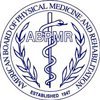
Knee pain is a common issue that affects people of all ages, whether due to injury, arthritis, or other chronic conditions. While treatment options vary, physical therapy is one of the most effective, non-invasive solutions for managing knee pain and restoring function. A structured physical therapy program not only alleviates discomfort but also strengthens the muscles surrounding the knee, improving stability and reducing the risk of further injury.
The Role of Physical Therapy in Knee Pain Relief
Physical therapy plays a crucial role in knee pain management by addressing the root causes of discomfort rather than just masking the symptoms. It helps in the following ways:
- Reducing Pain and Inflammation: Techniques such as manual therapy, ultrasound, electrical stimulation, and cold/heat therapy can ease pain and swelling.
- Restoring Mobility and Flexibility: Tight muscles and stiff joints can limit knee function. Physical therapy includes stretching exercises to improve mobility.
- Strengthening Supportive Muscles: Weak quadriceps and hamstrings place extra stress on the knee joint. Strength training builds muscle support, reducing strain.
- Correcting Movement Patterns: Poor posture and movement habits contribute to knee pain. A therapist can guide you in adopting healthier movement mechanics.
Key Physical Therapy Techniques for Knee Pain
Stretching and Range-of-Motion Exercises
Knee stiffness is common, particularly in individuals with osteoarthritis or following an injury. Gentle stretching exercises improve flexibility and restore range of motion, making daily activities easier. Common stretches include:
- Quadriceps and hamstring stretches
- Calf stretches
- Hip flexor stretches
Strengthening Exercises
Strong muscles around the knee help absorb shock and reduce stress on the joint. Physical therapists focus on strengthening:
- Quadriceps: Leg lifts, wall sits, and squats
- Hamstrings: Bridges and hamstring curls
- Glutes and Hips: Clamshells and lateral leg raises
Low-Impact Aerobic Conditioning
Cardiovascular exercise is essential for overall joint health, but high-impact activities can worsen knee pain. Low-impact options such as swimming, cycling, or walking on a treadmill help maintain fitness while protecting the knee.
Balance and Stability Training
Knee injuries often affect balance, increasing the risk of falls. Exercises that improve proprioception—your body’s ability to sense movement and position—are incorporated into physical therapy sessions. This may include:
- Single-leg stands
- Balance board exercises
- Controlled step-downs
When to Start Physical Therapy for Knee Pain
Early intervention is key to preventing long-term damage. If you experience persistent knee pain that affects your mobility or daily activities, seeking physical therapy can prevent the condition from worsening. It is particularly beneficial for:
- Post-surgical rehabilitation (e.g., after knee replacement or arthroscopy)
- Osteoarthritis management
- Recovery from ligament or meniscus injuries
- Chronic knee pain due to overuse or poor biomechanics
Overcoming Challenges in Physical Therapy
Starting a physical therapy program can be daunting, especially when experiencing pain. Here’s how to stay committed:
- Start Slow: Some discomfort is normal, but severe pain is not. Work with your therapist to adjust intensity as needed.
- Stay Consistent: Regular practice of prescribed exercises is crucial for progress.
- Seek Support: Friends and family can help keep you accountable and motivated.
- Listen to Your Body: Rest when necessary and communicate with your therapist about any concerns.
Conclusion
Physical therapy is a cornerstone of knee pain treatment, offering long-term relief without the risks associated with surgery or medication. By focusing on pain management, strength, flexibility, and proper movement, physical therapy empowers individuals to regain mobility and improve their quality of life. If knee pain is affecting your daily activities, consulting a physical therapist can set you on the path to recovery and prevent future issues.
Precision Pain Care and Rehabilitation has two convenient locations in Richmond Hill – Queens, and New Hyde Park – Long Island. Call the Queens office at (718) 215-1888 or (516) 419-4480 for the Long Island office to arrange an appointment with our Interventional Pain Management Specialists, Dr. Jeffrey Chacko or Dr. Sonny Ahluwalia.
Note: This article is for informational purposes only and should not be considered medical advice. Consult a healthcare professional for personalized recommendations.















